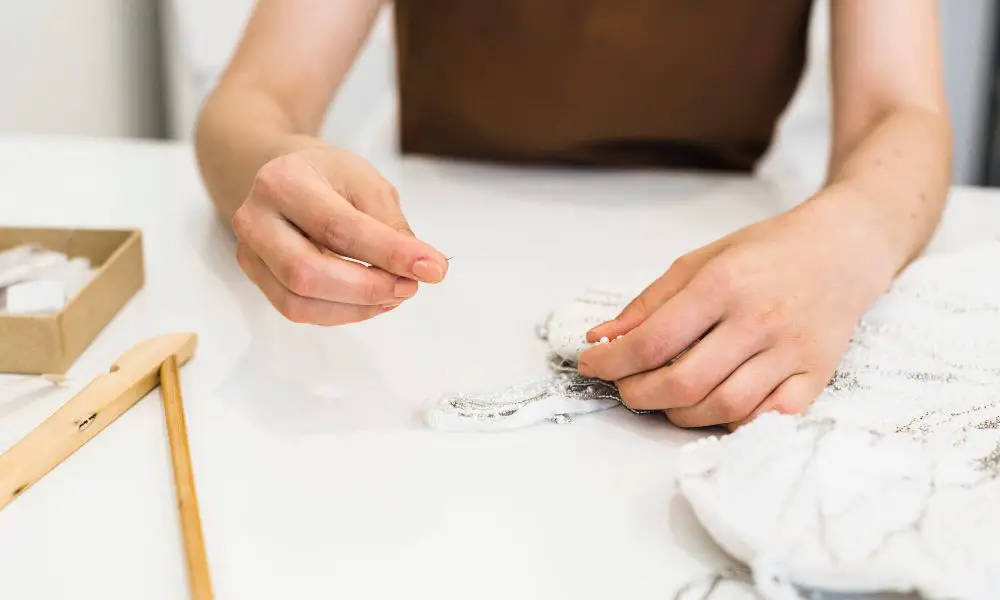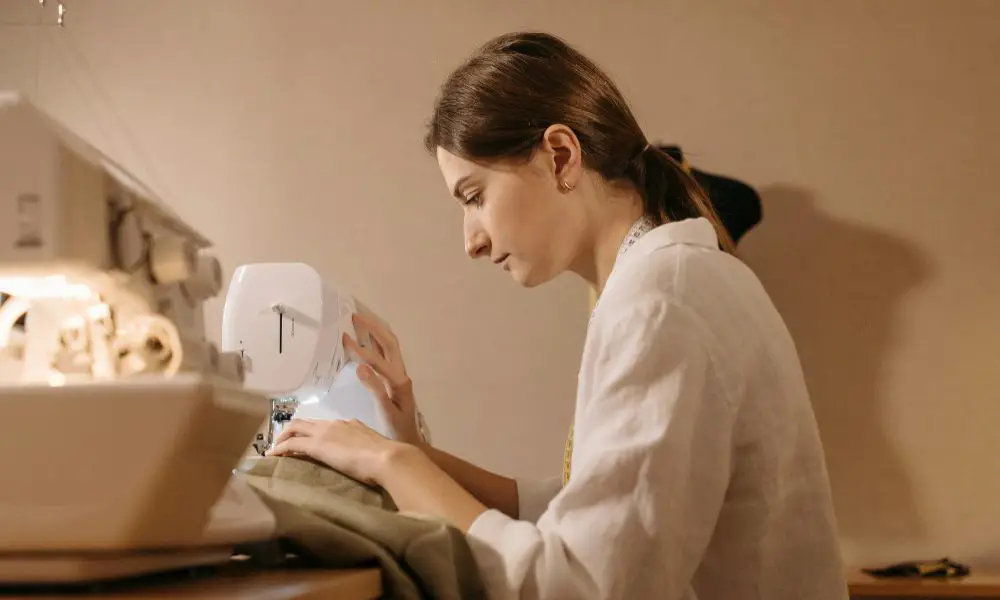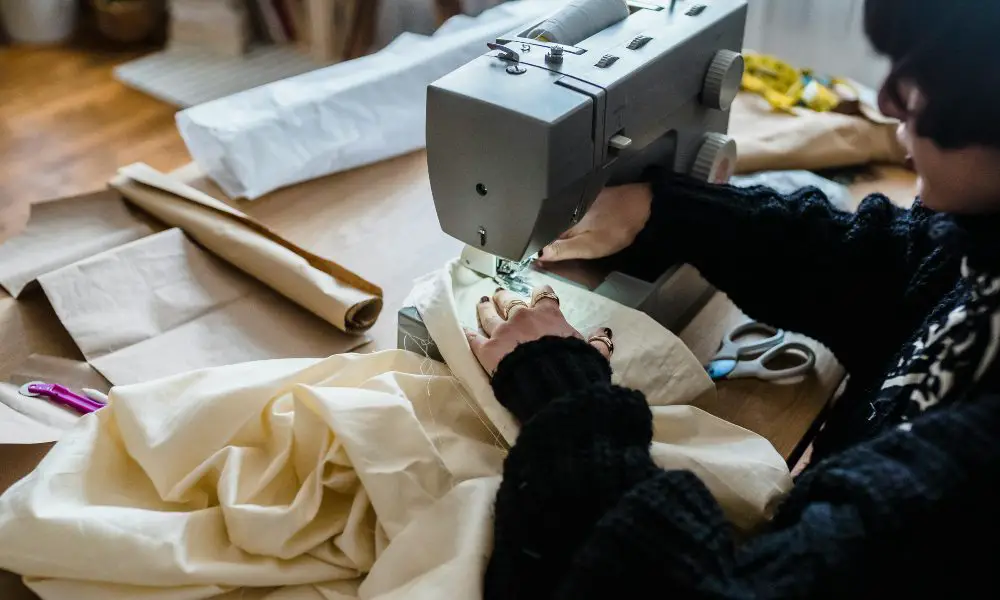Are you tired of your sewing machine’s unruly stitches ruining the polished look of your garments? Hand-sewing seams are an indispensable technique for the discerning crafter seeking impeccable finishes. While machine sewing may be faster, hand sewing allows unparalleled control and precision, making seams so discreet they virtually disappear into the fabric. When dealing with fragile materials that could be harmed by the mechanical punctures of a sewing machine, this precise craft is precious. Prepare to unlock the secrets of invisible stitching and elevate your sewing prowess!
The Benefits of Hand Sewing Seams
Precision and Control
In sewing, as in many crafts, there are times when only the human hand can achieve couture-level excellence. Machine stitches, while practical, can appear clumsy and intrusive, marring the fluid drape and seamless appearance of delicate fabrics. Hand sewing grants unrivaled mastery over stitch length, tension, and precise stitch placement, enabling you to coax even recalcitrant textiles into sleek, seamless submissions.
Handling Delicate Fabrics
Certain luxurious fabrics, from gossamer-light chiffons to delicate vintage laces, are too fragile to withstand a sewing machine’s needles. These ethereal materials demand the delicate caresses of hand stitches to unite their ephemeral planes without compromising integrity. Only an expertly wielded hand-sewing needle can navigate these textural minefields while preserving the fabrics’ beauty.
Achieving Invisibility
Beyond technical advantages, hand sewing carries an aura of old-world artisanry. Each stitch is a sublimely subtle brushstroke in creating haute couture garments. Mastering the disappearing act of the seamlessly camouflaged hand-sewn seam separates the amateur from the true atelier artisan.
Essential Tools and Materials
Needles for Hand Sewing
To conjure invisible seam sorcery, specialty needles are a must. Sharps, with sharp, laser-focused points, seamlessly pierce woven fabrics with minuscule perforations. With slightly rounded tips, Betweens are nimble negotiators of tightly woven textiles like linen or canvas. For garment-weight fabrics, rely on the strength and heft of milliner’s needles.
Threads
As needles vary, so must threads complement fabric and function. Opt for finer threads in natural fibers like cotton, silk, or polyester for hand-sewn seams. Mercerized cotton’s lustrous sheen is radiant on lightweight fabrics, while glazed silk casts an ethereal shimmer.
Other Supplies
No hand sewer’s arsenal is complete without a thimble to protect fingers, a high-quality needle threader for easy threading, and keen embroidery scissors for precise thread snipping.
Preparing the Fabric

Pressing and Pinning
Before a single stitch, ensure your fabric is pressed wrinkle-free and seam allowances are meticulously pinned. This establishes order for precision.
Trimming Seam Allowances
For most seams, trimming surplus bulk is essential for a smooth finish. However, retain ample breadth for encasing or rolling techniques.
Basting Stitches
As a mason erects scaffolding, most seamsters baste (temporarily stitch) seams before permanently joining them. Basting prevents shifting and tests drape and positioning.
Mastering Essential Hand Sewing Stitches
Running Stitch
The running stitch is the workhorse of hand-sewn seams. Secure your thread tail, then push the needle up through the main fabric, leaving a short forward stitch before pushing back down through the seam allowance fold. Repeat this rhythm for an expeditious, durable seam.
Backstitch
While the running stitch flows melodically, the backstitch fortifies each stitch by reverse-stitching after each forward pass. This stubborn stitch stabilizes edges against unraveling.
Ladder Stitch
Named for its functional semblance to ladder rungs, this stitch invisibly unites seam allowances. Weave horizontally, skipping one fabric edge to latch the opposing edge’s inner crease. When tensioned perfectly, this stitch vanishes.
Whipstitch
To neatly overcast seam edges and contain frayed threads, whipstitch is essential. Circle the needle under the raw edge, then loop over it in a continuous wrapping orbit.
Applying Stitches to Seams
Plain Seams
For standard straight seams, baste first. Then, work the running stitch along one allowance’s inner crease, coinciding with basting. Finish with the slip stitch, imbricating the underside of previous stitches.
Curved Seams
Distribute any excess fullness along the convex edge when navigating curves through tiny stitches. Follow with the ladder stitch precisely along inner creases for svelte sinuosity.
Felled Seams
To conceal raw edges in faultless felled seams, baste first, then wrap the smaller allowance over the more significant piece’s raw edge before securing with the felled stitch – a delicate wrapping whipstitch.
Tips and Tricks
Stitch Tension and Length
Moderating circumference and tautness is critical for nearly invisible seams. Minute stitches with a smidge of ease blend seamlessly while over-tightening causes puckering.
Knotting Threads
While avoiding knots is preferred, occasional subtle interior knots may secure stitches. Whipstitch knots into the seam’s interior rather than at terminals for discretion.
Sewing with Grain
For stability and harmonious drape, align stitches sympathetically with the woven or knit grain. Sewing against increases bulk and distortion risk.
Finishing Touches
Securing Stitches
Form a handsome curved eye with the terminal thread at a seam’s end before whipping the needle back through the aperture. This dapper node stabilizes against unraveling.
Trimming Threads
Once secured, trim lingering tails flush to the surface. Scorching residual wisps with a Thread Zap allows disappearance.
Final Pressing
Don’t neglect one final pressing to coax your handiwork into flawless, sculptural finesse. Use a seam roll to skillfully shape enclosed seams that are unachievable by the machine.
FAQs:
Why should I hand sew seams instead of a sewing machine?
Hand-sewing seams allow greater precision, control, and invisibility than machine sewing. It’s ideal for delicate fabrics, curved seams, and a couture-level finish.
What types of needles are best for hand-sewing seams?
Sharps, between, and milliner’s needles are commonly used for hand-sewing seams, each suited for different fabric types and weights.
How do I prevent my hand stitches from looking bulky or uneven?
Use fine threads, moderate stitch tension and length, and practice techniques like the ladder stitch for an invisible, streamlined finish.
Can I hand sew seams on knit fabrics?
Hand sewing seams on knits is possible, but it requires special techniques like the catch stitch or stretchy threads to accommodate the fabric’s stretch.
How do I finish and secure hand-sewn seams?
Secure stitches with knots or thread loops, trim excess threads close to the fabric, and press seams for a polished finish.
Conclusion
Sewing purists understand the romance and artistry of fashioning finely hand-stitched seams. While demanding patience and practice, the rewards are garments elevated from ordinary to opulent through transcendent stitchwork. Would you attempt hand-sewing your next couture creation?
***
Main image: freepik




